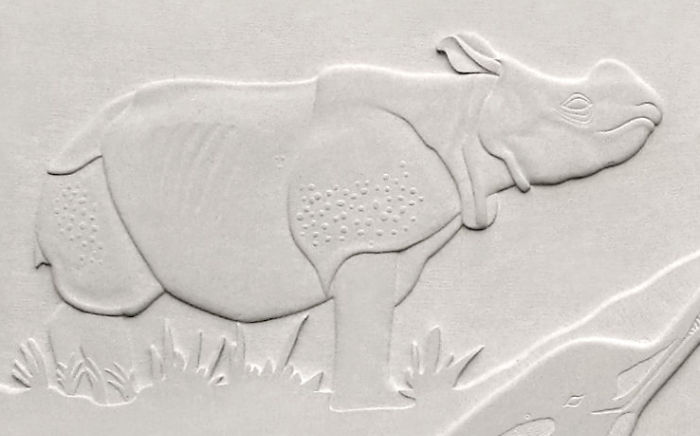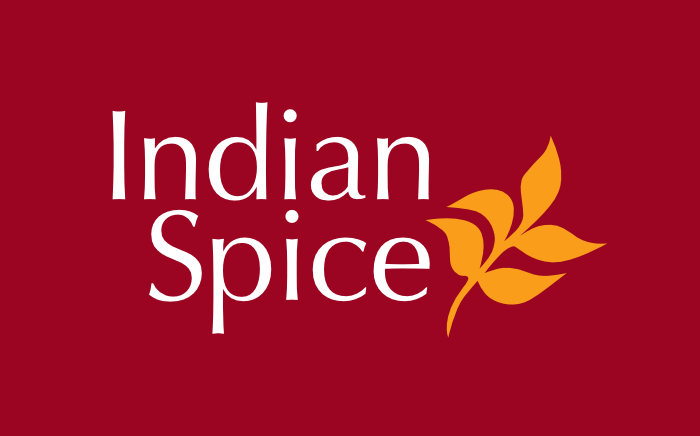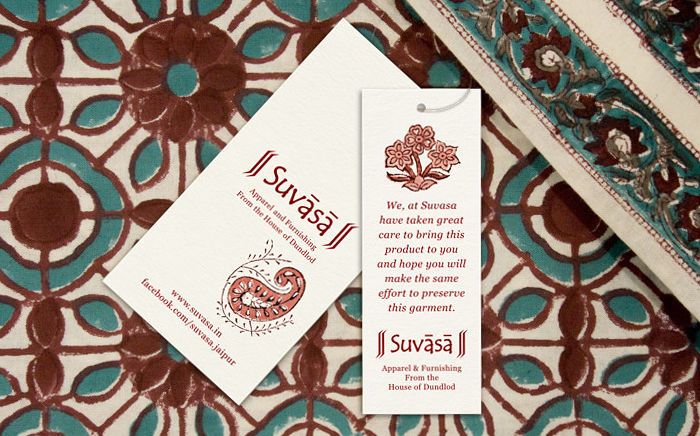Case study about the design and fabrication of a stone mural for WWF-India secretariat. Hand-crafted in sandstone, it symbolised commitment to the cause of nature conservation and honoured India’s stone carving tradition.
Background, Purpose and Creative Brief
WWF (World Wide Fund for Nature) India is one of the foremost organisations working for the conservation of India’s wildlife and natural habitats. In 2007, they commissioned the design and fabrication of a mural to visually highlight and signify the organisation’s important work. It was to be installed at the entrance of WWF-India secretariat in New Delhi. Stone was their choice of material owing to its relationship with the earth, its robustness and they were keen to leverage India’s age-old tradition of stone carving.

WWF-India wanted to highlight on the mural five priority / threatened species — Asian Elephant, Bengal Tiger, Black-necked Crane, Ganges River Dolphin and Greater One-horned Rhinoceros — along with aspects of habitats and a tree. During the initial meetings, the designer understood that protection of these species would lead to conservation of large natural tracts. This would in-turn benefit a host of other species including humans and lead to many intangible benefits like water and soil security.
Planning and Research
As the first step, the designer consulted an architect — Mr. Gaurav Bhatnagar (from Archeus Design Studio) — and a professional firm specialising in stone crafts — The Stoneland (now Prime Crafts) — in the city of Jaipur, Rajasthan, to understand how the signage would be fabricated and installed.
Several stone types were considered and samples shared with WWF-India. Beige Sandstone — in a size of 84 x 60 inches — was finalised as it has a bright hue, favours carving, does not have self texture and is largely maintenance free.
The designer also worked with experts at WWF-India to identify suitable images of the species. Many images were collected from journals, field guides and WWF’s image database. Shortlisted images had to meet two important criteria: to be acceptable if not ideal representatives of the species and to be in profile (and not in perspective) so that they would render well in relief (without use of any colour).

Illustration and Mockups
Once images of species were shortlisted, the designer created their silhouettes, arranged them in a page layout software and got the basic mural composition approved by the client. He then worked on detailed illustrations and rendered the finalised reference images into vector based line art. In the final composition, species images were balanced and supported by elements of habitat: water, grasses, a hill and a tree, to give a holistic picture of the environment. WWF logo and the tagline for a living planet also occupied a prominent place in the composition.

Conceptually, the final composition depicted aspects of nature, harmony and balance — in sync with ethos of the organisation. The mockup with detailed illustrations was presented to the client. Upon approval, the black and white composition was printed in full / actual size on a large format laser printer and handed over to The Stoneland. Photographs of each species were also provided for reference.
The Stone Carving Process
India has one of the richest stone carving traditions in the world. The state of Rajasthan has been a major center of stone based arts and crafts. Here, centuries old forts, palaces, temples and towns are studded with impressive stone carvings. Stone carving or crafting skills and knowledge have been passed on from one generation to other, a practice that continues in the country even today.
The Stoneland’s team members include traditionally trained and skilled craftsmen. The task of carving was entrusted upon them. On the stone slab ordered as per the approved size, the craftsmen traced the graphics from the full size laser printout and began the process of carving.

The graphics were meticulously hand-crafted (as opposed to machine crafted — a technique gaining popularity these days). The result of handcrafting on stone is usually more subtle and unique.
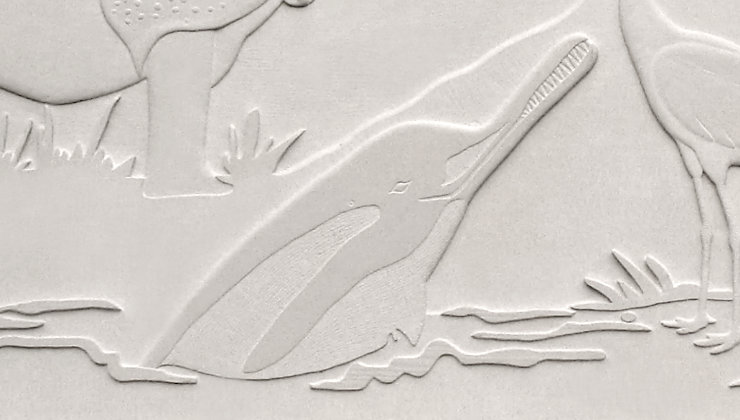
The carving was done using the simplest tools — essentially a chisel and a hammer — with great patience and skill. The craftsmen regularly consulted reference photographs to understand the relief, expression and skin texture aspects of each species.
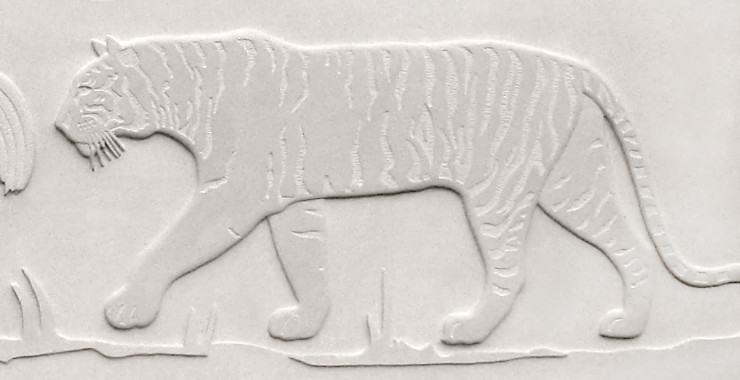
The crafting process — which went on for several weeks — was closely supervised by The Stoneland, the architect and the designer. On The Stoneland’s suggestion, the composition was divided into two (top and bottom) layers. The top layer was carved deeper than the bottom one. This brought in extra depth and a sense of realism into the artwork.
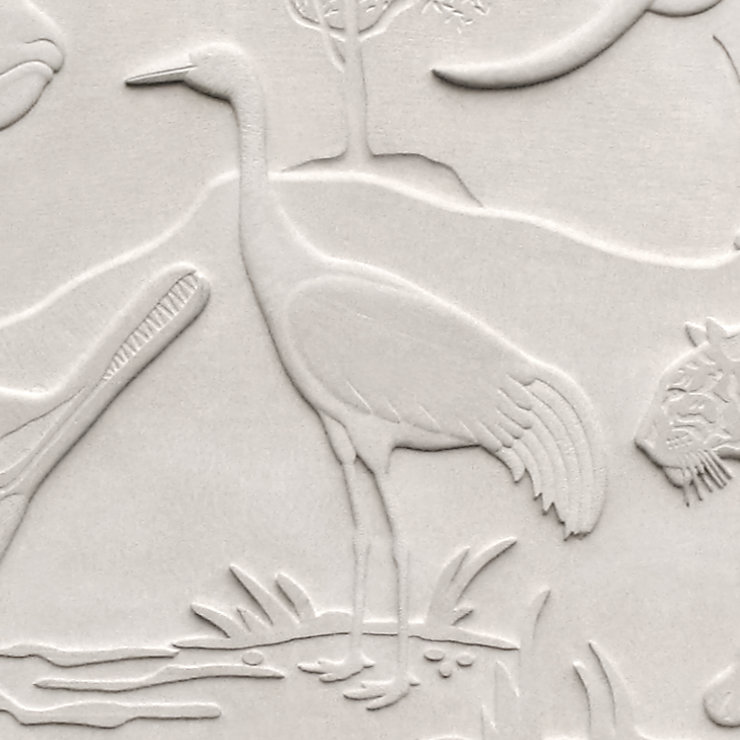
Carving was done in Bas-relief technique — drawing upon India’s rich stone carving heritage — and reminded one of the famous elephant sculptures at Mahabalipuram.

The species were rendered to look realistic (as opposed to stylised), which was appropriate for WWF-India.
Logistics
Once the carving work was complete, edges of the mural were neatly rounded-off. The finished mural, in size 84 inches (width) x 60 inches (height) x 2.5 inches (depth), was transported from Jaipur to New Delhi in a mini-truck and installed at the designated spot in WWF-India secretariat compound. This was no easy task as it weighed around 400 kgs!
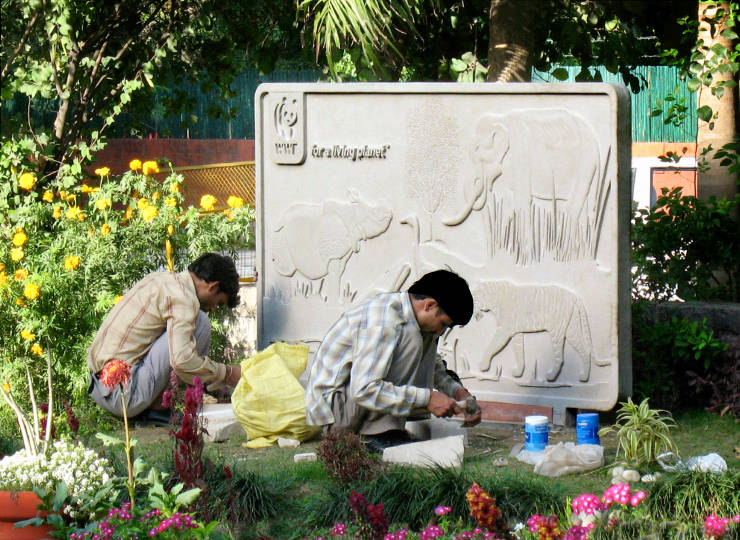
Stone bases, finishing material and the craftsmen of course accompanied the mural to Delhi. The architect supervised the installation process. Names of all the craftsmen were carved on the back side of the mural. It was coated with waterproofing sealant upon installation.
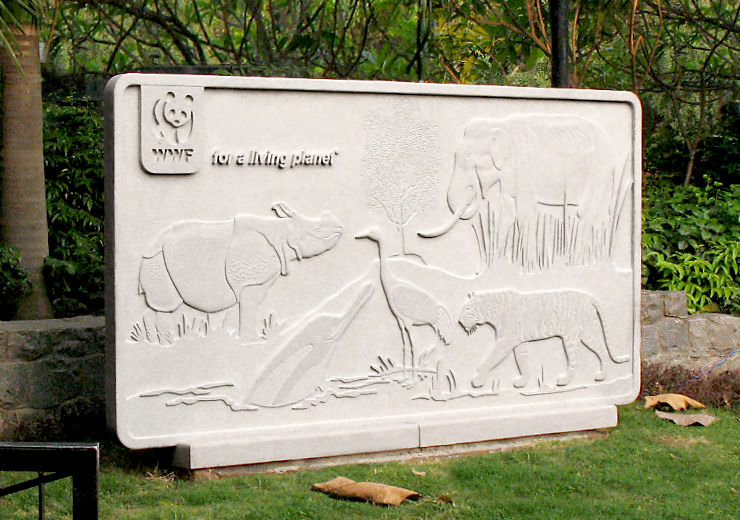
Conclusion
The assignment could be completed owing to remarkable teamwork involving experts at WWF-India, a graphic designer / illustrator, an architect, a professional stone fabricator, highly skilled craftsmen and many others who provided logistical support. A significant portion of the effort was put in by The Stoneland in terms of how they approached the rendering task and executed it.
The mural took one back to the foundations of mass communication, for stone carvings are some of the earliest known works of representational art created by humans. Carved in sandstone, the mural was perhaps appropriate at WWF-India secretariat, for it is located in iconic Lutyens’ Delhi, where sandstone has been extensively used. Set in stone (literally), the mural symbolised WWF-India’s commitment and determination towards its conservation mission.
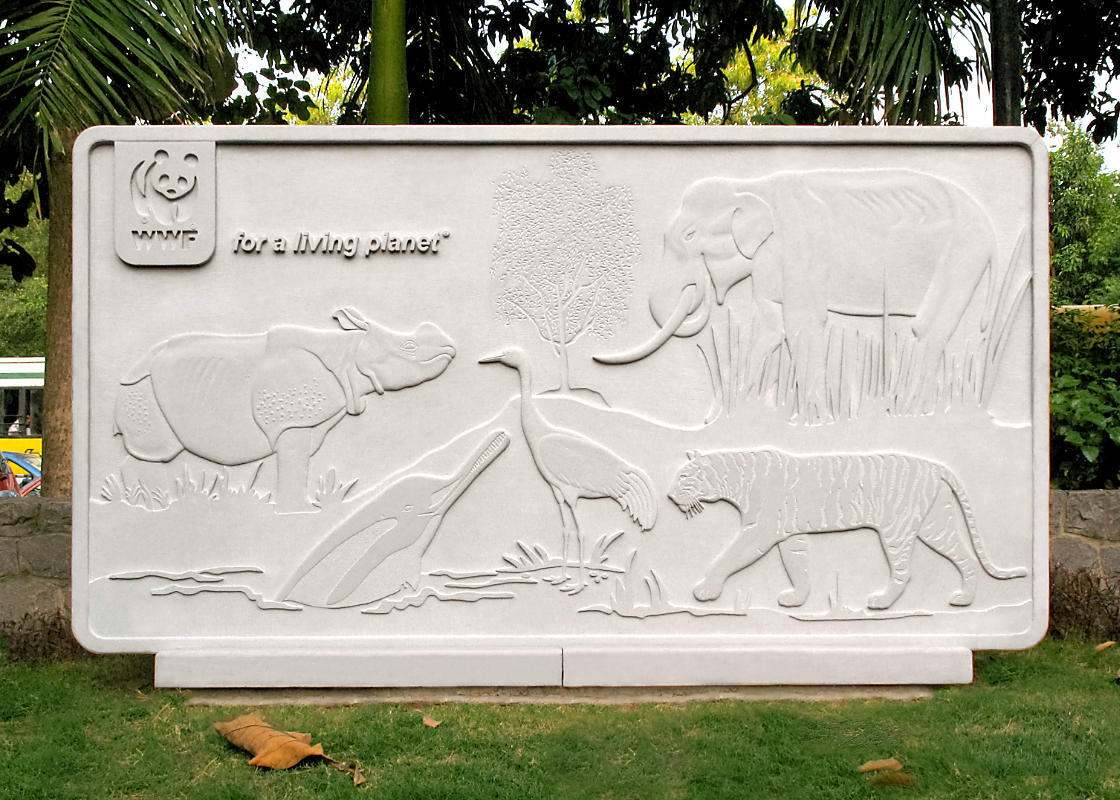
Copyright Information
- WWF Panda logo / symbol, the tagline for a living planet and all designs / photographs published in this article are copyright of WWF and may not be reproduced.
- WWF® and ©1986 Panda Symbol are owned by WWF. All rights reserved.
- © 1986 Panda Symbol WWF – World Wide Fund For Nature (Formerly World Wildlife Fund). ® “WWF” is a WWF Registered Trademark.

